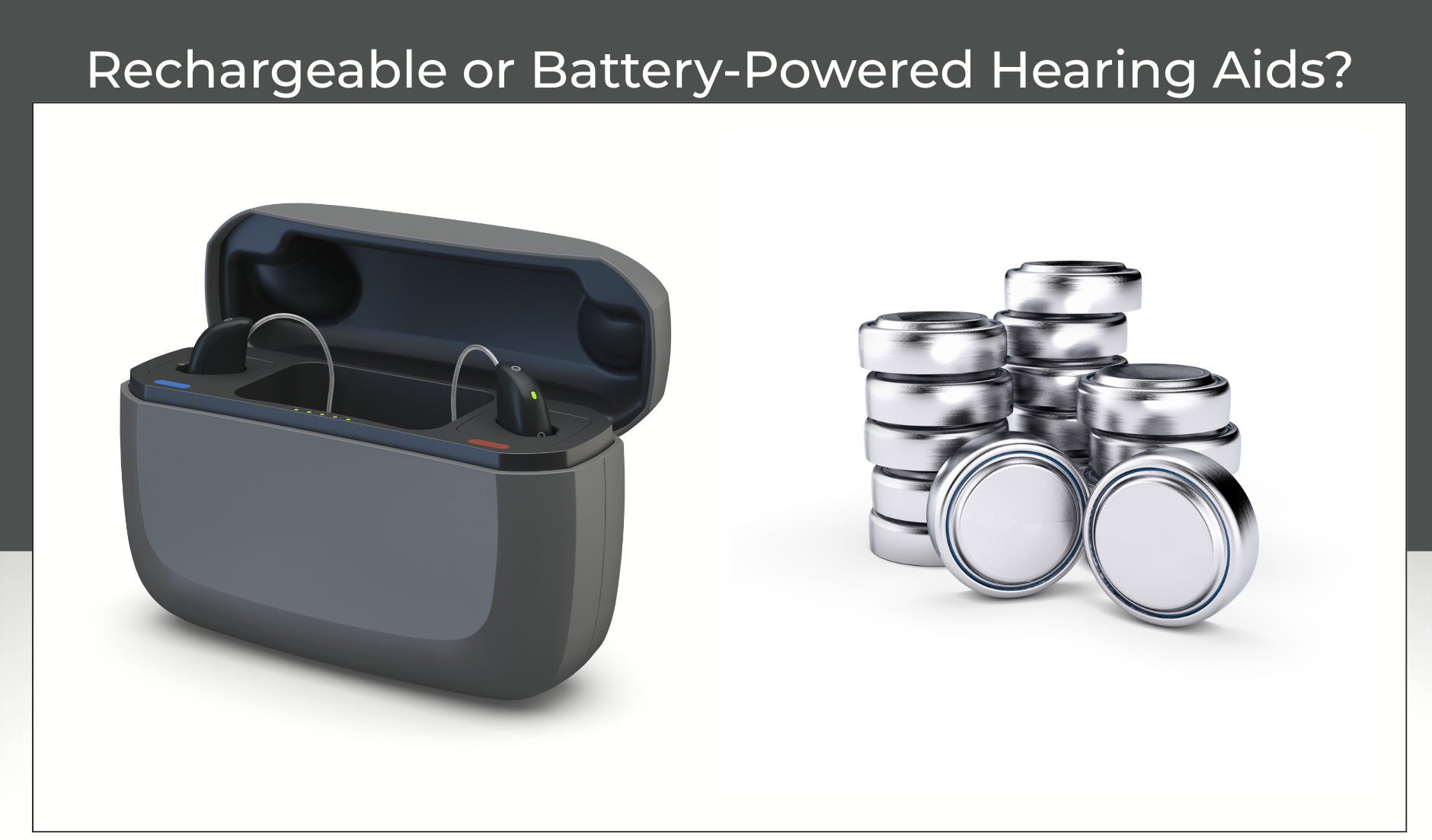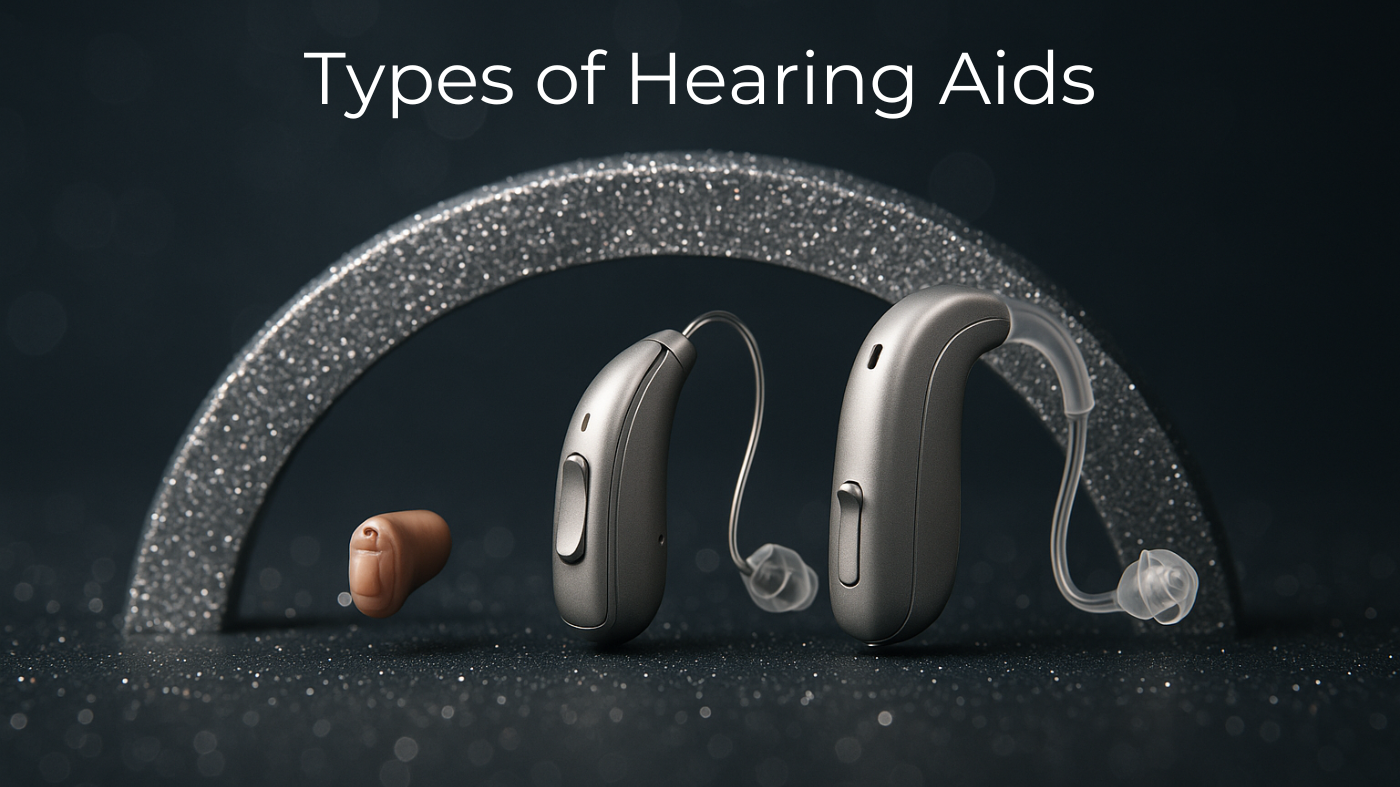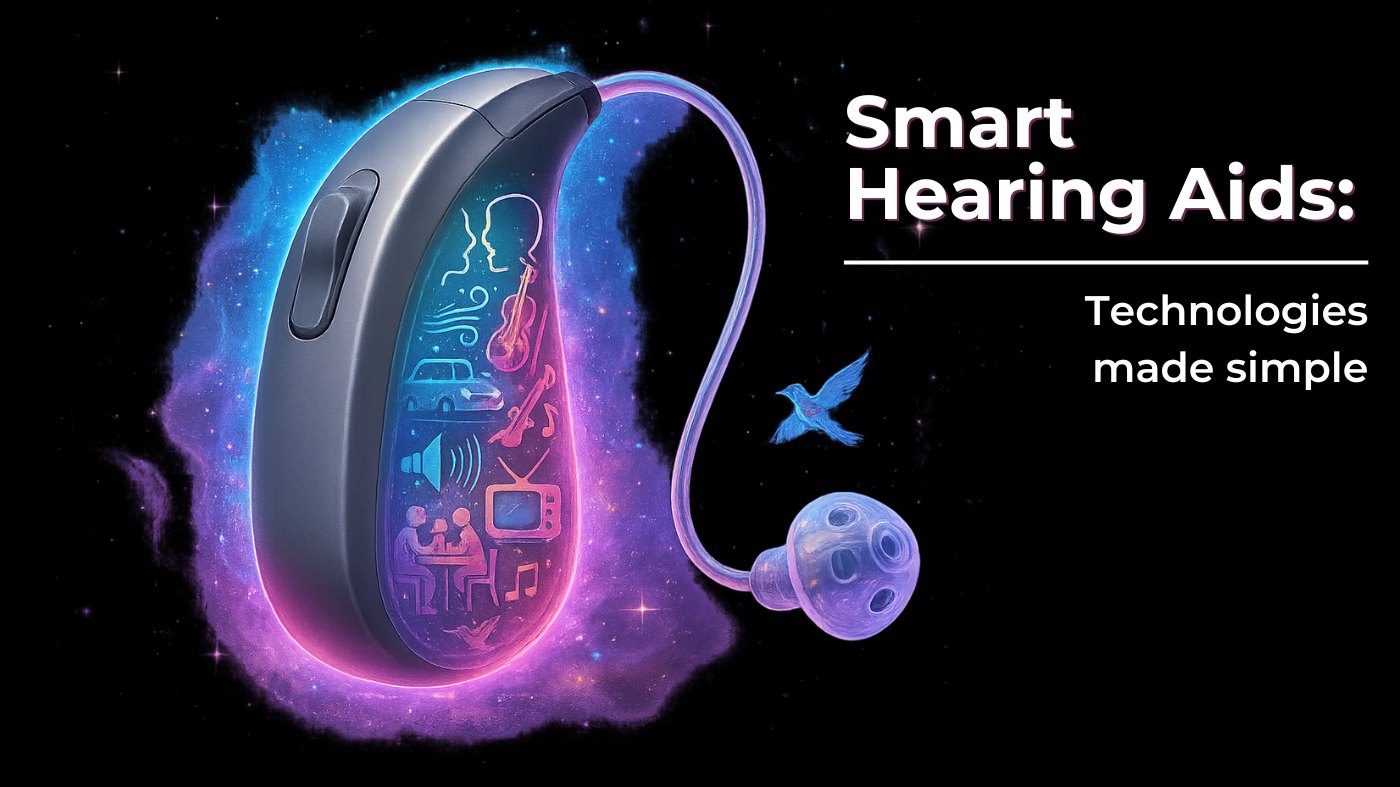
Smart Hearing Aids: The Technologies That Define Modern Devices in 2025
Smart hearing aids are no longer just amplifiers – they’re miniature marvels of high tech. Today’s models pack more computing power than the first lunar lander. Best of all: they don’t just serve your ears – they enhance your overall quality of life.
Most of the features described below are now standard in many devices. But it’s worth looking closely: some models only offer a basic tech setup, while others go far beyond. If you’re looking for smart hearing aid technology, don’t just consider the style – look at what’s inside.
Table of contents
1. Smart automation: Volume and environment recognition
Modern hearing aids automatically detect your surroundings – quiet, noisy, on the move, in conversation, at a restaurant. They do this through built-in environmental analysis that works in fractions of a second. Depending on the acoustic environment, the device automatically adjusts:
- volume
- microphone settings (more on this below)
- background noise suppression
- sound quality and tone
The benefit: No need for constant manual tweaks – your hearing aids think for you, ensuring comfortable hearing whether you’re out shopping, walking in the park, or dining with friends.
2. Bye-bye background noise: Noise suppression
Not every sound is welcome. Smart hearing aids constantly analyze which sounds are “useful” – like speech – and which are disruptive, such as a humming fridge or traffic. Background noise is selectively reduced without affecting voices.
In technical terms: algorithms analyze frequency patterns, compare them to stored speech profiles, and dampen anything that doesn’t match.
The result: Clearer conversations, less listening effort.

3. Ready for the unexpected: Impulse noise reduction
A clattering plate, a slamming door, a barking dog – these sudden, loud sounds are known as impulse noises. Without protection, they can seem jarringly loud. Smart tech recognizes the impulse signature and reacts instantly to soften the sound.
Your benefit: Less startling noise, a more pleasant soundscape – without losing clarity in speech.
4. Wind? No problem: Wind noise management
Anyone who’s cycled or walked outdoors with hearing aids knows the issue: wind rushing straight into the mic. Today’s devices use a combination of solutions:
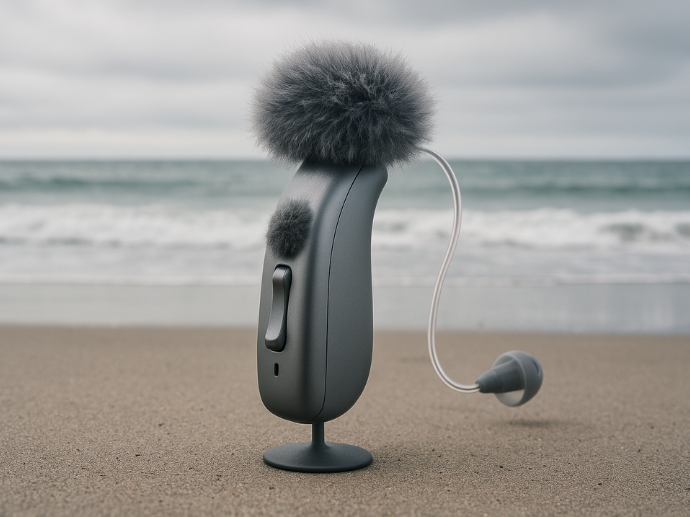
- automatic wind detection (via special algorithms + microphone design)
- smart switching between microphones
- targeted filtering of disruptive frequencies
5. Like a spotlight for your ears: Directional microphones
Imagine if you could “focus” your hearing forward like a mic. That’s exactly what directional microphone technology does:
- In quiet environments, you hear naturally in all directions
- In tricky situations (like a noisy café), the focus shifts forward or toward the person speaking

Behind the scenes: multiple microphones work together to enhance or reduce sounds based on direction.
The result: You hear who you’re talking to – even in a crowd.
6. Movement-aware: Motion sensors
Hearing aids with built-in motion sensors know if you’re sitting, walking, or jogging. Why does that matter?
- Movement changes your hearing environment (rustling, shifting speech direction, etc.)
- The device adjusts accordingly – focus, volume, filters
Example: On a walk, conversation partners tend to walk side by side and not face each other. Motion sensors detect this, and the microphones shift to the side to catch the voice.
Your benefit: A more natural, adaptive listening experience.
7. Smarter hearing: Artificial intelligence & deep neural networks (DNNs)
The latest generation of hearing aids is powered by AI – especially deep neural networks (DNNs), which are layered, self-learning algorithms.
In simple terms: the device has “heard” millions of situations and learned how speech typically sounds in each. It uses that experience to decide in real time what’s important – and what’s not.
The benefit: More natural speech, even in noisy places. Your brain doesn’t have to work as hard – so you can focus on what’s being said, not just on hearing it.
8. Wireless freedom: Bluetooth, apps, and streaming
Modern hearing aids are true multitaskers. Thanks to Bluetooth, you can:
- take phone calls directly (the hearing aid acts like a headset)
- stream music and podcasts
- get TV sound straight to your ears
With a smartphone app, you can also control:
- volume and sound profiles
- listening programs (e.g., restaurant, music, driving)
- battery levels
- “find my hearing aid” feature
In short: full control – right in your pocket.
Learn how Bluetooth hearing aids can enhance your everyday life!
9. More than hearing: Health tracking
Some hearing aids track steps, movement, activity levels, and even social interaction. Certain models can detect falls and call for help.
The goal: to make hearing aids part of a healthy, safe lifestyle – especially for older users.
10. Extra tools for special situations: Wireless accessories
Need more reach or specific support? Accessories can help:
- TV adapters stream sound directly to your hearing aids
- Remote mics are great for lectures, meetings, or car rides
- Adapters for phones/laptops connect devices that don’t support Bluetooth natively
Your advantage: Better understanding – even at a distance.
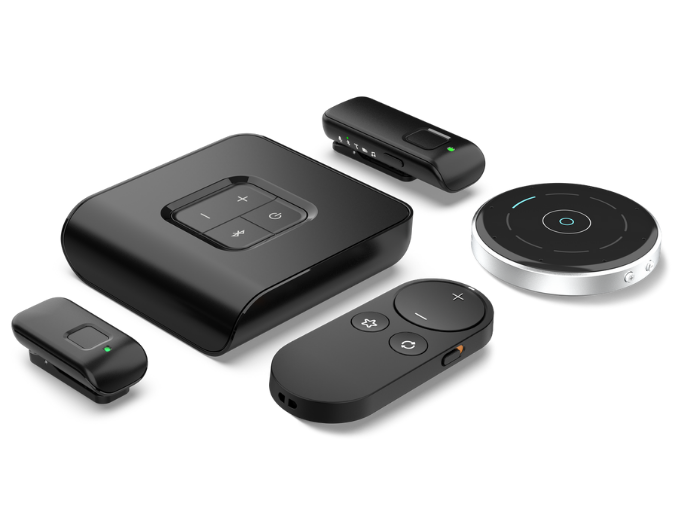
Conclusion: Smart hearing aids are everyday heroes
Today’s hearing aids do far more than amplify sound – they’re everyday assistants, communication hubs, safety tools, and comfort boosters. In short: technology for a better life.
One thing to keep in mind: these features vary depending on the model and price range. Some are highly customizable, others offer simpler setups. If sound quality, comfort, and personalization matter to you, it’s worth getting expert advice – because the right device makes all the difference.
Curious? Give them a try. Smart tech isn’t just something to read about—it’s something to experience.
Find out what information the WHO has compiled about hearing loss.
FAQ: Most frequently asked questions
What are smart hearing aids?
Smart hearing aids are advanced digital hearing systems with automatic environment detection, Bluetooth, AI support, and comfort-enhancing features. They adapt to typical listening situations automatically – and often include bonus features like step tracking.
What are the benefits of smart hearing aids in everyday life?
They reduce background noise automatically, improve speech clarity, and integrate seamlessly into your daily routine. Many can be further personalized through an app.
Do I need a smartphone to use smart hearing aids?
Not necessarily. Basic hearing functions are available right on the device. However, features like streaming and fine-tuning with an app do require a smartphone.
Are there smart hearing aids with artificial intelligence?
Yes. Some models use deep neural networks (DNNs) to identify and enhance speech in real time. Especially in complex situations, AI-powered hearing aids can make a noticeable difference.
Do all hearing aids offer the same features?
No. The features, adjustability, and performance can vary greatly depending on brand, style, and price range. A personalized consultation is key.
About the author
-
Smart Hearing Aids: The Technologies That Define Modern Devices in 2025
Smart hearing aids are no longer just amplifiers – they’re miniature marvels of high tech. Today’s models pack more computing power than the first lunar lander. Best of all: they don’t just serve your ears – they enhance your overall quality of life. Most of the features described below are now standard in many devices.…
-
Rechargeable vs Battery Hearing Aids: 6 Key Factors to Help You Decide
Rechargeable hearing aids have quickly become a popular choice. But is all the hype justified? Are rechargeable models right for everyone? In this guide, we’ll walk you through 6 important factors to consider when deciding rechargeable vs battery hearing aids. 1. How Easy Should It Be to Use? Battery-powered hearing aids: Rechargeable hearing aids: Bottom…
-
Types of Hearing Aids: Which One Is Right For You?
If you’re researching hearing solutions, you’ve probably come across several different types of hearing aids – like BTE, ITE, RIC, or CIC. But what do these terms mean, and how do you know which style is best for your needs? This guide explains the most common hearing aid types in simple, practical terms – with…


